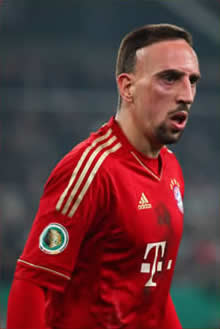Rigid positional play is now less important
Yes, of course it is an event for us in Germany when two German teams at once, Bayern Munich and Borussia Dortmund, reach the final of the Champions League, and that the two teams saw Barcelona and Real Madrid defeated.
Successes only a snapshot
But the pro coaches are all agreed that these successes are only a snapshot, and that we are still far from being able to see a trend behind them. We are certain that Real, Barça and other top teams will put in the work and not take these defeats lying down. So let’s wait and see what happens in the coming years.
These successes are nevertheless the fruits of years of further development in German player training. We currently have an incredible number of talented players, such as we have never before experienced in Germany.

Years of analysis of Spanish soccer
The successes of Munich and Dortmund are a consequence of years spent analysing Spanish soccer. Every pro coach dreamed of his team one day being able to play like Barcelona, but what was missing were really talented players.
A readiness to run and good fighting spirit, but no particular technical brilliance: that’s what characterized German soccer for the outside world. More recently, training and the spotting of young talent have changed radically: more of that later.
The Tiki Taka code has been cracked and the game has been opened up. Pressing early when the ball is lost, being ready to run, changes of pace and technically confident combination passes leading to a strike at goal have all been perfected. Whatever position a player is used in, he has to attack and defend, this is required whatever his name is. Whether he is called Schweinsteiger, Ribery, Robben or Götze, Reus or Lewandowski, every player has learnt to subordinate himself to the team in defence or attack. A Spanish newspaper put it like this, writing about Borussia Dortmund: ‘They attack with seven players and come back with eight.’
If the opposition has a player who doesn’t drop back, the game is immediately moved back, outnumbering the opposition. The risk of a counter-attack when the ball is lost is minimised by a high level of technical skills and immediate forechecking.
‘Loss of the ball is not a loss but the opportunity to win the ball back and immediately put pressure on the opposition’, that’s how easy soccer is.
The fundamental requirement is technically well-trained players
You’ll have realised by now that, despite all these technical principles, it’s not enough to know how things go, what you need above all is technically well-trained players.
Matthias Nowak (Individual coach for professional players, creative and technique trainer FC Bayern Munich (Women)), identifies what may be the most important reason to train really successfully.
‘Playing from the head to the foot’, you can’t put it clearer than that, for nowadays players have just fractions of a second to react and make decisions. Rigid technical training won’t achieve this, which is why the development of creativity is one of the most important tasks in soccer coaching. The brain delivers lightning-fast impulses which are instantly converted into motor reflexes. Then players do things they didn’t even think they were capable of. If we do not coach for creativity, our players will always fall into the same movement patterns, they will be as predictable as puppets and will not be able to develop their talent with real freedom.
No, this isn’t witchcraft; and in another article by Matthias Nowak we will show you examples of this indispensible coaching for creativity.
Uwe Bluhm